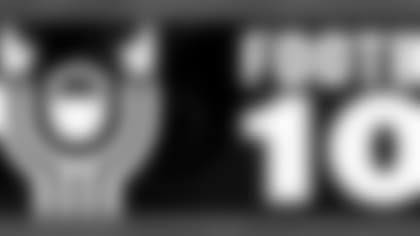In this feature, Football 101, NFL officials help explain and clarify some of the rules that impact the game. This week, umpire Tony Steratore details what constitutes intentional grounding.
Summary From The Official NFL Rule Book - Rule 8, Section 2
In the NFL Rule Book, intentional grounding occurs when "a passer, facing an imminent loss of yardage because of pressure from the defense, throws a forward pass without a realistic chance of completion."
There are three situations, outlined in the rule book, in which intentional grounding should not be called:
ITEM 1: PASSER OR BALL OUTSIDE TACKLE POSITION
Intentional grounding will not be called when a passer, who is outside, or has been outside, the tackle position throws a forward pass t
hat lands at or beyond the line of scrimmage, even if no offensive player(s) have a realistic chance to catch the ball (including when the ball lands out of bounds over the sideline or endline).
ITEM 2: PHYSICAL CONTACT
Intentional grounding should not be called if the passer initiates his passing motion toward an eligible receiver and then is significantly affected by physical contact from a defensive player that causes the pass to land in an area that is not in the direction and vicinity of an eligible receiver; or the passer is out of the pocket, and his passing motion is significantly affected by physical contact from a defensive player that causes the ball to land short of the line of scrimmage.
ITEM 3: STOPPING THE CLOCK
A player under center is permitted to stop the game clock legally to save time if, immediately upon receiving the snap, he begins a continuous throwing motion and throws the ball directly into the ground.
The Official Point of View
"First of all, if he's out of the pocket and gets the ball back to or beyond the line of scrimmage, you're not going to have intentional grounding," Steratore explained. "It's got to be from the pocket, unless he doesn't get it to the line of scrimmage.
"So you want to know where the quarterback is in relationship to the pocket, you want to know where the receiver is in relationship to the pass, and you also have to consider pressure from the rush. If he's in the pocket, under pressure, and he throws the ball into an area that's not in the vicinity of an eligible receiver, then you have the ingredients for intentional grounding.
"The definition of being under pressure is probably about a step and a half or two; when a sack is imminent, he's deemed to be under pressure and he can't dump it to somewhere that no one is."
Last week, umpire Tony Steratore and back judge Tony Michalek detailed what indicates roughing the passer.














